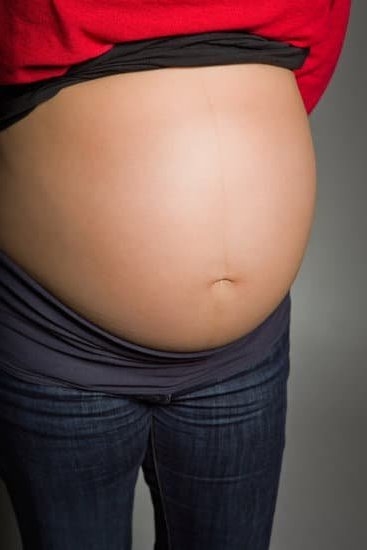Ectopic pregnancy is a potentially life-threatening condition where a fertilized egg implants outside the uterus, most commonly in the fallopian tubes. This abnormal implantation can lead to serious complications if not diagnosed and treated promptly. How common is an ectopic pregnancy? This question often arises among women and healthcare providers seeking a better understanding of this reproductive health issue.
While ectopic pregnancies are relatively rare, they still pose a significant risk to pregnant individuals, with potentially severe consequences if left untreated. Understanding the causes and risk factors associated with this condition is crucial in order to recognize the symptoms early on and seek medical attention promptly. Factors such as previous pelvic inflammatory disease, endometriosis, or previous abdominal or pelvic surgery increase the risk of an ectopic pregnancy.
Recognizing the signs and symptoms of an ectopic pregnancy is vital for early detection and treatment. Symptoms may include vaginal bleeding, abdominal pain, shoulder pain, dizziness, or weakness. If experiencing any of these symptoms during early pregnancy, seeking immediate medical attention is crucial to rule out an ectopic pregnancy and prevent complications such as rupture of the fallopian tube. Stay tuned as we delve deeper into understanding ectopic pregnancies and how they are diagnosed and treated in the following sections.
Understanding Ectopic Pregnancy
Ectopic pregnancies occur when a fertilized egg implants outside the uterus, most commonly in the fallopian tubes. This can lead to serious complications if not detected and treated promptly. Understanding the causes and risk factors of ectopic pregnancy is crucial for early detection and intervention.
Several factors can increase the risk of an ectopic pregnancy, including a history of pelvic inflammatory disease (PID), previous ectopic pregnancies, smoking, certain fertility treatments, and conditions that affect the fallopian tubes such as endometriosis or tubal surgery. Age also plays a role, with women over 35 being at higher risk.
To help identify those at risk of an ectopic pregnancy, here are some common causes and risk factors to consider:
- History of pelvic inflammatory disease
- Previous ectopic pregnancies
- Smoking habit
- Endometriosis
- Tubal surgeries
Knowing about these causes and risk factors can help individuals and healthcare providers understand who may be more susceptible to an ectopic pregnancy and prompt them to seek medical attention if experiencing symptoms. It is important to be aware of these factors to ensure timely diagnosis and treatment, reducing the chances of complications associated with ectopic pregnancies.
Symptoms of Ectopic Pregnancy
Ectopic pregnancy occurs when a fertilized egg implants itself outside the uterus, most commonly in the fallopian tubes. This condition can be life-threatening if not detected and treated promptly. Recognizing the symptoms of an ectopic pregnancy is crucial for early intervention and prevention of serious complications.
Common Symptoms
One of the hallmark symptoms of an ectopic pregnancy is abdominal pain, typically on one side. This pain may come and go or be persistent, and it can range from mild to severe. Other common symptoms include abnormal vaginal bleeding, shoulder tip pain, and discomfort during urination or bowel movements. It’s important to note that some women may not experience any symptoms initially, making regular prenatal check-ups essential for early detection.
When to Seek Medical Attention
If you suspect you may have an ectopic pregnancy, it’s crucial to seek medical attention immediately. Delayed diagnosis and treatment can lead to rupture of the fallopian tube, causing internal bleeding and potentially life-threatening complications. Contact your healthcare provider if you experience severe abdominal or pelvic pain, dizziness, fainting, or signs of shock such as rapid heartbeat and low blood pressure. Early diagnosis through ultrasound imaging and blood tests is key in managing an ectopic pregnancy effectively.
Risk Factors and High-Risk Groups
Certain factors increase the risk of experiencing an ectopic pregnancy, including a history of pelvic inflammatory disease (PID), previous ectopic pregnancies, endometriosis, tubal surgeries, or use of assisted reproductive technologies like in vitro fertilization (IVF). Women over 35 years old are also at higher risk. Understanding these risk factors can help individuals be more vigilant in recognizing potential symptoms and seeking prompt medical care.
Diagnosis of Ectopic Pregnancy
Medical History and Physical Examination
When a woman presents with symptoms such as abdominal pain, vaginal bleeding, or shoulder pain, healthcare providers typically begin the diagnostic process by taking a detailed medical history. They may inquire about the patient’s menstrual cycles, any previous pregnancies, and any recent fertility treatments. A physical examination may also be conducted to check for signs of an ectopic pregnancy, such as tenderness in the abdomen or pelvis.
Ultrasound Imaging
One of the key methods used to detect an ectopic pregnancy is through ultrasound imaging. Transvaginal ultrasound is often preferred over abdominal ultrasound because it provides clearer images in early pregnancy.
This imaging technique allows healthcare providers to visualize the uterus and the presence of a gestational sac outside the uterine cavity. In cases where an ectopic pregnancy is suspected but not clearly visible on ultrasound, additional blood tests measuring hormone levels like human chorionic gonadotropin (hCG) may be performed to aid in diagnosis.
Serum hCG Monitoring
Serum hCG monitoring plays a crucial role in diagnosing ectopic pregnancies. In a healthy pregnancy, hCG levels usually double every 48-72 hours during the early weeks. In cases of ectopic pregnancy or other complications, hCG levels may rise more slowly than expected or even decline.
Serial measurements of hCG levels in combination with clinical symptoms and ultrasound findings help healthcare providers determine the location and viability of the pregnancy. This comprehensive approach enables early detection and prompt management of ectopic pregnancies to prevent potential complications for women at risk.
By utilizing a combination of medical history, physical examination, ultrasound imaging, and serum hCG monitoring, healthcare providers can effectively diagnose ectopic pregnancies and initiate appropriate treatment promptly. Early detection is essential in preventing life-threatening complications associated with this condition. Knowing how common an ectopic pregnancy can be underscores the importance of raising awareness about its risk factors and symptoms to facilitate timely intervention for affected individuals.
Treatment Options for Ectopic Pregnancy
Ectopic pregnancy is a serious medical condition that occurs when a fertilized egg implants itself outside the uterus, most commonly in the fallopian tubes. This condition requires prompt attention as it can lead to life-threatening complications if left untreated. When it comes to treating ectopic pregnancies, there are two main approaches: surgical intervention and non-surgical options.
Surgical treatment for ectopic pregnancies typically involves removing the pregnancy from the fallopian tube or wherever it is located outside of the uterus. This can be done through laparoscopic surgery, which is minimally invasive and involves making small incisions to access and remove the ectopic pregnancy. In more severe cases, open abdominal surgery may be necessary. The choice of surgical procedure depends on various factors such as the size and location of the ectopic pregnancy.
On the other hand, non-surgical approaches for treating ectopic pregnancies include medications such as methotrexate, which stops the growth of the pregnancy tissue and allows the body to absorb it over time. This method is often used when the ectopic pregnancy is detected early and is relatively small in size. It is essential to closely monitor patients receiving methotrexate therapy to ensure that it is effectively resolving the ectopic pregnancy without any complications.
In some cases, a combination of both surgical and non-surgical approaches may be necessary depending on individual circumstances. The choice of treatment will be determined by healthcare providers based on factors such as the patient’s overall health, how far along the ectopic pregnancy has progressed, and whether there are any complications present. Overall, timely intervention is crucial in managing an ectopic pregnancy effectively and reducing potential risks to maternal health.
Complications Associated With Ectopic Pregnancy
An ectopic pregnancy occurs when a fertilized egg implants itself outside the uterus, usually in the fallopian tube. This condition can lead to serious complications if left untreated. One potential complication of an ectopic pregnancy is a ruptured fallopian tube, which can cause severe internal bleeding and requires immediate medical attention. The risk of a rupture increases as the pregnancy progresses, leading to symptoms such as sharp abdominal pain, dizziness, and fainting.
In some cases, an ectopic pregnancy may resolve on its own without causing any complications. However, if the growing embryo is not removed, it can continue to grow and damage the surrounding tissue. This can result in further complications such as infection or scarring of the fallopian tube. If left untreated, an ectopic pregnancy can be life-threatening and may require emergency surgery to prevent severe complications.
Another complication associated with an ectopic pregnancy is the emotional toll it can take on individuals and couples. Dealing with a pregnancy that cannot be carried to term can be incredibly challenging and may result in feelings of grief, loss, guilt, or inadequacy. It is essential for individuals experiencing an ectopic pregnancy to seek support from healthcare providers, counselors, or support groups to navigate through this difficult time.
| Complication | Details |
|---|---|
| Ruptured Fallopian Tube | Can cause severe internal bleeding; symptoms include sharp abdominal pain and dizziness |
| Tissue Damage | Growing embryo may damage surrounding tissue leading to infection or scarring of the fallopian tube |
| Emotional Impact | Ectopic pregnancies can result in emotions such as grief, guilt, or loss for individuals and couples |
Statistics
Ectopic pregnancies are relatively rare, occurring in about 1-2% of all pregnancies. However, they can have serious implications for the health of the pregnant individual if not diagnosed and treated promptly. Ectopic pregnancies happen when a fertilized egg implants itself outside of the uterus, most commonly within the fallopian tube. This can lead to complications such as rupture of the fallopian tube and internal bleeding if left untreated.
One of the main risk factors for an ectopic pregnancy is damage or abnormalities in the fallopian tubes, which can prevent the fertilized egg from moving into the uterus. Other risk factors include a history of pelvic inflammatory disease, previous ectopic pregnancies, and conditions such as endometriosis or pelvic surgery. Understanding these risk factors is important in identifying individuals who may be more prone to developing an ectopic pregnancy.
According to recent statistics from the American Pregnancy Association, about 1 in every 50 pregnancies is ectopic. This translates to approximately 2% of all reported pregnancies.
While ectopic pregnancies may not be very common compared to other types of pregnancy complications, their potentially life-threatening consequences emphasize the importance of early detection and treatment. Knowing how common an ectopic pregnancy is can help raise awareness about this condition and encourage individuals to seek prompt medical attention if they experience symptoms suggestive of an ectopic pregnancy.
| Statistics | Data |
|---|---|
| Percentage of all pregnancies that are ectopic | 1-2% |
| Approximate percentage of reported pregnancies that are ectopic | 2% |
Prevention of Ectopic Pregnancy
Ectopic pregnancies cannot be completely prevented, but there are steps that can be taken to reduce the risk. One of the most important ways to lower the chances of an ectopic pregnancy is by practicing safe sex and using contraception consistently and correctly. The use of barrier methods such as condoms can help prevent sexually transmitted infections that may increase the likelihood of an ectopic pregnancy.
Furthermore, early detection and treatment of conditions such as pelvic inflammatory disease (PID) and endometriosis can also help reduce the risk of ectopic pregnancies. These conditions are known to cause scarring and damage to the fallopian tubes, making it more likely for a fertilized egg to become stuck in them. By addressing these underlying issues promptly, the chances of experiencing an ectopic pregnancy may be decreased.
It is important for individuals who have had a previous ectopic pregnancy or tubal surgery to consult with their healthcare provider before attempting to conceive again. Close monitoring and early intervention can help manage any potential risks associated with a subsequent ectopic pregnancy. While it may not always be possible to prevent an ectopic pregnancy entirely, taking proactive measures to address risk factors and maintain overall reproductive health can play a crucial role in reducing its occurrence.
Conclusion
In conclusion, it is vital to highlight the significance of early detection and prompt treatment for ectopic pregnancy. As we have explored in this article, ectopic pregnancies occur when a fertilized egg implants outside the uterus, most commonly in the fallopian tubes. This serious condition can lead to potentially life-threatening complications if not addressed promptly. Recognizing the signs and symptoms, such as abdominal pain and abnormal vaginal bleeding, is crucial for seeking medical attention promptly.
Furthermore, understanding the causes and risk factors associated with ectopic pregnancy can help women be more aware of their own reproductive health and take necessary precautions. By knowing the potential risk factors, such as pelvic inflammatory disease or previous tubal surgery, individuals may be able to make informed decisions about their reproductive health or seek medical advice if needed.
Overall, while ectopic pregnancies are considered rare compared to traditional intrauterine pregnancies, they still pose a significant health risk for women of childbearing age. By staying informed about the symptoms, seeking regular prenatal care, and being vigilant about any unusual signs during pregnancy, individuals can increase the chances of early detection and successful treatment. Ultimately, prioritizing early detection and prompt intervention is crucial in preventing severe complications associated with ectopic pregnancies and ensuring better outcomes for both mother and baby.
Frequently Asked Questions
What Are the Odds of an Ectopic Pregnancy?
The odds of experiencing an ectopic pregnancy vary depending on several factors. On average, about 2% of all pregnancies are ectopic. Women who have had pelvic inflammatory disease, tubal surgery, endometriosis, or previous ectopic pregnancies are at a higher risk.
What Is the Main Cause of Ectopic Pregnancy?
The main cause of an ectopic pregnancy is when the fertilized egg implants outside the uterus, most commonly in the fallopian tubes. This can occur due to issues with the fallopian tubes themselves, such as scarring or blockages that prevent the egg from reaching the uterus.
Am I at Risk of Getting an Ectopic Pregnancy?
Certain factors can increase your risk of having an ectopic pregnancy. These include a history of pelvic infections, inflammation in the reproductive organs, previous abdominal or tubal surgery, or conditions like endometriosis. Additionally, women over 35 and those who smoke are also more likely to experience an ectopic pregnancy.

Welcome to my fertility blog. This is a space where I will be sharing my experiences as I navigate through the world of fertility treatments, as well as provide information and resources about fertility and pregnancy.





